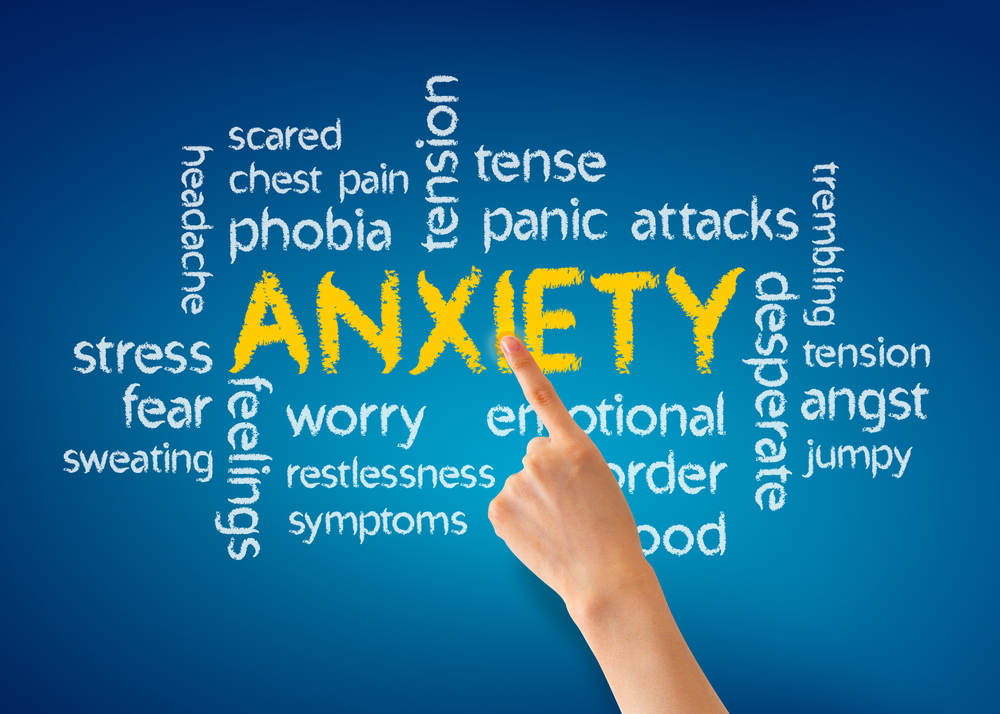The National Alliance on Mental Illness (NAMI) asserts: “Anxiety disorders are a group of related conditions, each having unique symptoms. However, all anxiety disorders have one thing in common: persistent, excessive fear or worry in situations that are not threatening.” There are currently five distinct types of anxiety disorders listed in the Diagnostic and Statistical Manual of Mental Disorders, Fifth Edition (DSM-5). They include the following:
- Generalized anxiety disorder (GAD): characterized by six months or more of chronic, exaggerated worry and tension that is unfounded or much more severe than the normal anxiety most people experience.
- Obsessive-compulsive disorder (OCD): characterized by intrusive, unreasonable thoughts and/ or fears (obsessions) that commonly lead to compulsive, repetitive behaviors. OCD can manifest and affect people of all ages.
- Panic disorder: characterized by the sudden onset of recurring panic attacks that occur spontaneously and without cause.
- Post-traumatic stress disorder (PTSD): characterized by a set of adverse cognitive, behavioral, and emotional changes that occur after the experience of one or more traumatic events.
- Social anxiety disorder (also known as social phobia): characterized by excessive fears of scrutiny, embarrassment, and humiliation in everyday social situations.
The exact cause for developing an anxiety disorder remains unknown. Research suggests that it is likely due to a combination of contributing factors such as psychological, environmental, genetic, and developmental factors.
Signs and Symptoms
There are a variety of signs and symptoms associated with each type of anxiety disorder. Some of the more general signs and symptoms that span across most anxiety disorders could include, but are not limited to, any of the following examples, provided by Centers for Disease Control and Prevention (CDC):
- Difficulty falling asleep
- Fatigue
- Trouble concentrating
- Muscle tension
- Behavioral problems
- Excessive worry
- Strong startle response
- Nervousness
- Nausea
- Sweating
- Fear of being alone
- Nail biting
- Frequent urination and/ or bedwetting
The symptoms can present in any combination with varying levels of severity. If left untreated, an individual struggling with an anxiety disorder is at increased risk for developing a plethora of adverse short and long-term effects.
For Information and Support
Every family in need of mental health treatment must select a program that will best suit the needs of their family. When one member of a family struggles, it impacts everyone in the family unit. To maximize the benefits of treatment we work closely with the entire family to ensure that everyone is receiving the support they need through these difficult times. Seeking help is never easy, but you are not alone! If you or someone you know needs mental health treatment, we strongly encourage you to reach out for help as quickly as possible. It is not uncommon for many mental health difficulties to impact a person’s life, long term. Pursuing support at the beginning of one’s journey can put the individual in the best position to learn how to manage themselves in a healthy way so they can go on to live happy and fulfilling lives.
OUR KNOWLEDGEABLE ADMISSIONS TEAM CAN BE REACHED 24/7 AT INFO@PACIFICRTC.COM OR CALL: 800-531-5769






